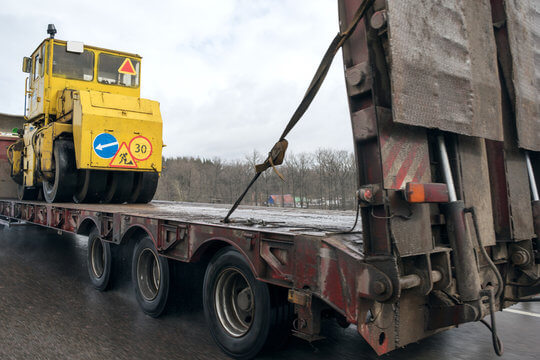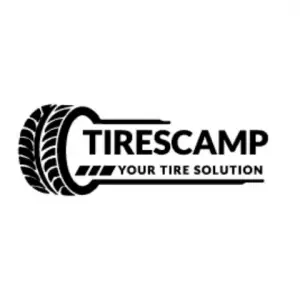The number of layers of cotton in tires was once indicated by tire ply rating, which is also related to a tire’s strength and carrying capacity. As a result, a tire with 8 plies referred to a tire with 8 cotton layers, and a tire with 10 plies referred to a tire with 10 cotton layers. Fortunately, the tire industry has advanced far enough that adding more cotton layers to a tire is no longer the sole method to strengthen it.
So what is the difference between 8-ply and 10-ply tires now? 8-ply tires, now also known as the D range tires, are tires that can withstand an inflation pressure of up to 65 PSI at maximum load. On the other hand, 10-ply tires, also known as the F range tires, are tires that can withstand an inflation pressure of up to 80 PSI at maximum load, which then means that they can support heavier weights.
The two tires are not that much different from each other. A 10-ply tire can, in theory, withstand more pressure and be more durable. But these tires also have some drawbacks that will be discussed in this post.
Continue reading this article to learn more about the differences between 8-ply and 10-ply tires.
8-Ply vs. 10-Ply Tires: What are the Differences
Performance
The 8-ply tires are better than the 10-ply tires in terms of performance. Tires with lower ply ratings can change directions easily. Additionally, these tires are also light, enhancing their agility. The reasoning is straightforward: since less weight requires to be directed, the tire will be more responsive overall.

Cost
Although the price tag and ply rating of a tire are not always related; a greater ply rating typically means a higher cost. A greater psi value indicates that a tire can accommodate more air without sacrificing its structural integrity. This is accomplished through expensive research and development.
Consequently, 8-ply tires often cost less than 10-ply tires. You should be aware that numerous indirect and direct factors affect a tire’s price, but if you compare identical tires with various ply ratings, the greater the rating, the more costly the tire will be.
Comfort
A harder rubber compound tolerating greater psi levels is one technique to get a more ply rating. The 8-ply tire is, therefore, more comfortable than the 10-ply tire since it has a softer material. You will definitely notice this small difference if you ride on these two tires back-to-back.
The difference is more pronounced at greater speeds. For this reason, drivers who spend most of their time on the road tend to go for the 8-ply tires.
Efficiency
Because 10-ply tires are often heavier than 8-ply tires, more force is required to start them. The greater the force required to move the tires, the more fuel consumption. Although these variations aren’t really significant, you’ll eventually notice them.
Hauling
10-ply tires are created with enhanced hauling abilities; hence they are superior to 8-ply tires when it comes to hauling. Even though both 10-ply and 8-ply tires can handle your needs in terms of pressure, 10-ply tires will sustain the load far better, making the car or truck seem highly stable at almost any speed.
Towing
The 8-ply tires are less effective for towing than 10-ply tires. A greater ply rating will always be more efficient in towing, regardless of the load.
Durability
The strength and durability of a tire are affected by various factors, but if you compare two identical tires whose ply ratings are different, the tire with the greater rating ought to be more robust. Based on that, the 10-ply tires are more durable than the 8-ply tires.
Weight
A tire with high psi can withstand much more weight than a tire with a lower psi. This means that the 10-ply tires will support more weight compared to the 8-ply tires.
8 Ply vs 10 Ply Tires: Which One Should You Buy?
The simplest and best approach to decide which of these two tires is ideal for your car is to analyze all their disadvantages and advantages thoroughly.
Because they are comfortable, effective, responsive, and typically less expensive, 8-ply tires are more useable on a daily basis. 10-ply tires, on the other hand, perform better while carrying and towing heavy loads since they can withstand greater pressure.
It is important to note that individuals who utilize their trucks for work reasons are likelier to choose tires with greater ply ratings. Typically, trailers with a history of hauling incredibly big loads will have tires with a greater ply rating.
Best Overland Tires | 10-Ply Tire Explanation | Best All-Terrain Tires (Must Watch Video)
Frequently Asked Questions (FAQ)
Do Your Require the 10-Ply Tires on Your Truck?
If your SUV or truck is 0.75 tons or more, then you require the 10-ply tires.
Is a greater ply rating better?
Ply Ratings once referred to the precise number of plies that created the tire casing. A tire was stronger with more plies. Most tires in use today have three plies or less, with large vehicle tires sometimes having four.
Will Switching from 6 to 10-Ply Tires Affect the Gas Mileage?
Yes. Changing from the 6-ply tires to the 10-ply tires will lead to a ten percent loss in fuel efficiency.
Are All LT Tires 10 Ply?
Not all LT tires are 10-ply. Some are 6-ply and 8-ply.
Are 10-Ply Tires Suitable for Off-Road Activities?
In addition to being one of the best tires for transporting heavy loads, 10-ply tires can also be used for off-roading activities, especially for climbing.
How many miles do LT tires last?
The average 50000 to 60000 miles .
How long will LT tires last?
The LT Tires you can use minimum 4 to 5 years .
Conclusion
You can clearly recognize that the devil is in the specifics towards the conclusion of our article on “8-ply tires vs. 10-ply tires.” An 8-ply tire will always be the superior option for most people who use their cars for regular daily travel. However, 10-ply tires will be more useful if you frequently tow or haul bigger loads.
A 10-ply tire also has a tendency to be more resilient, which is advantageous if you frequently drive through hazardous locations like construction sites.
